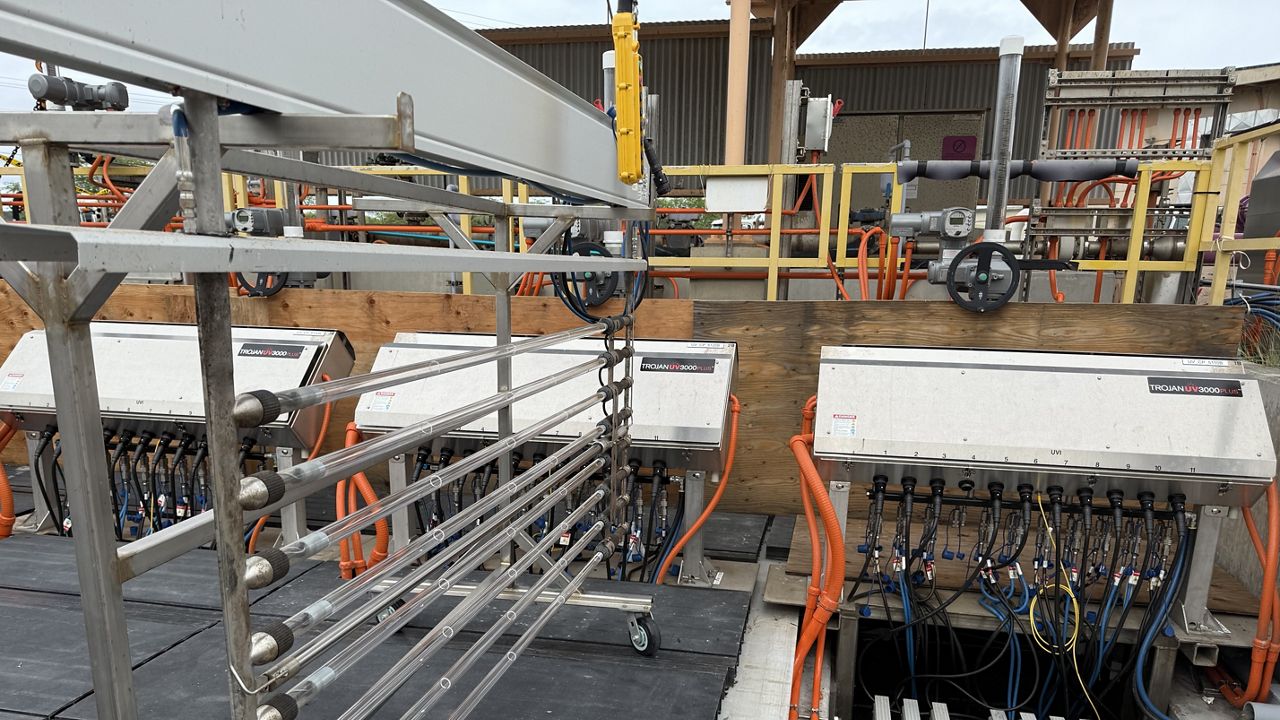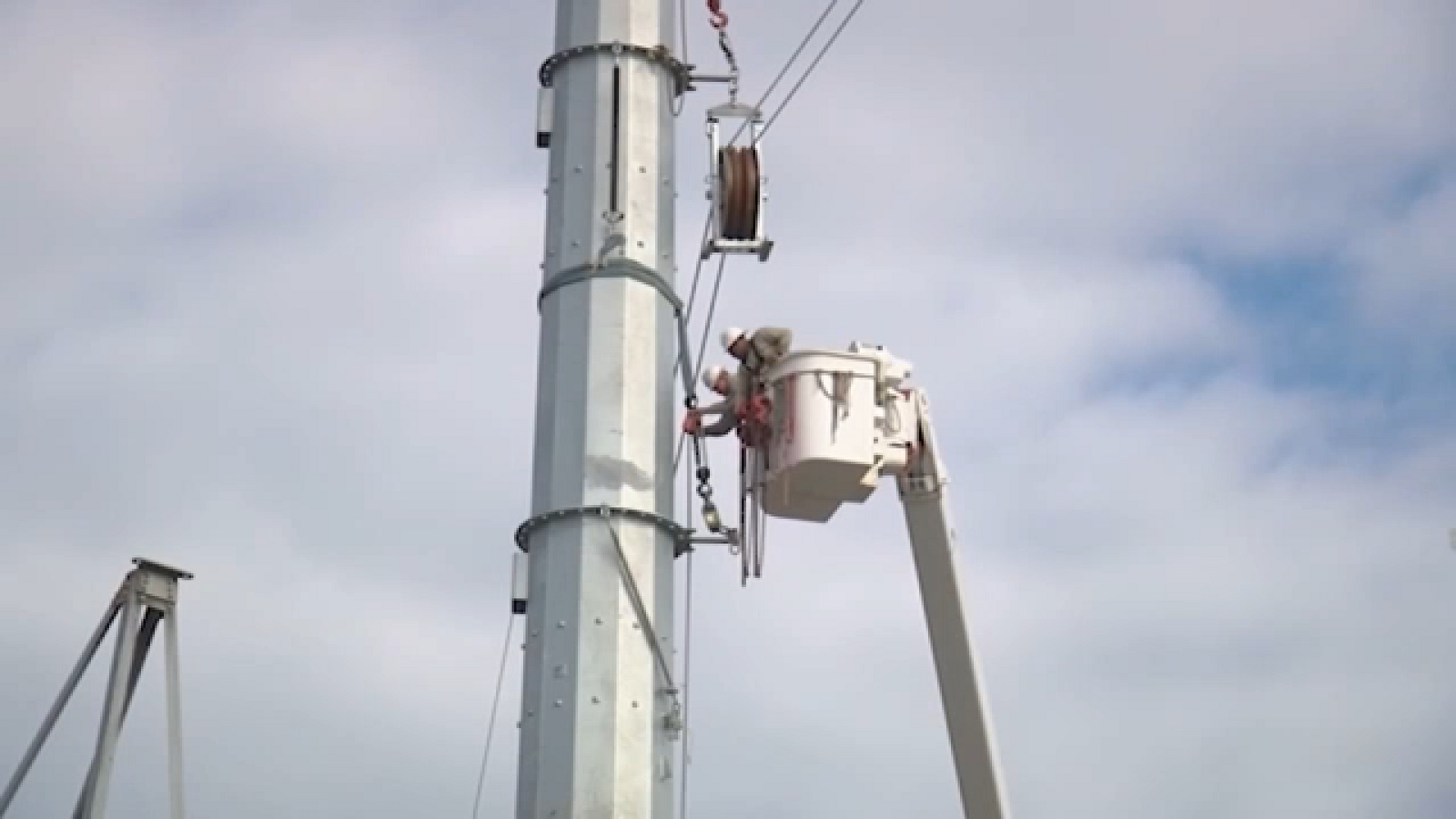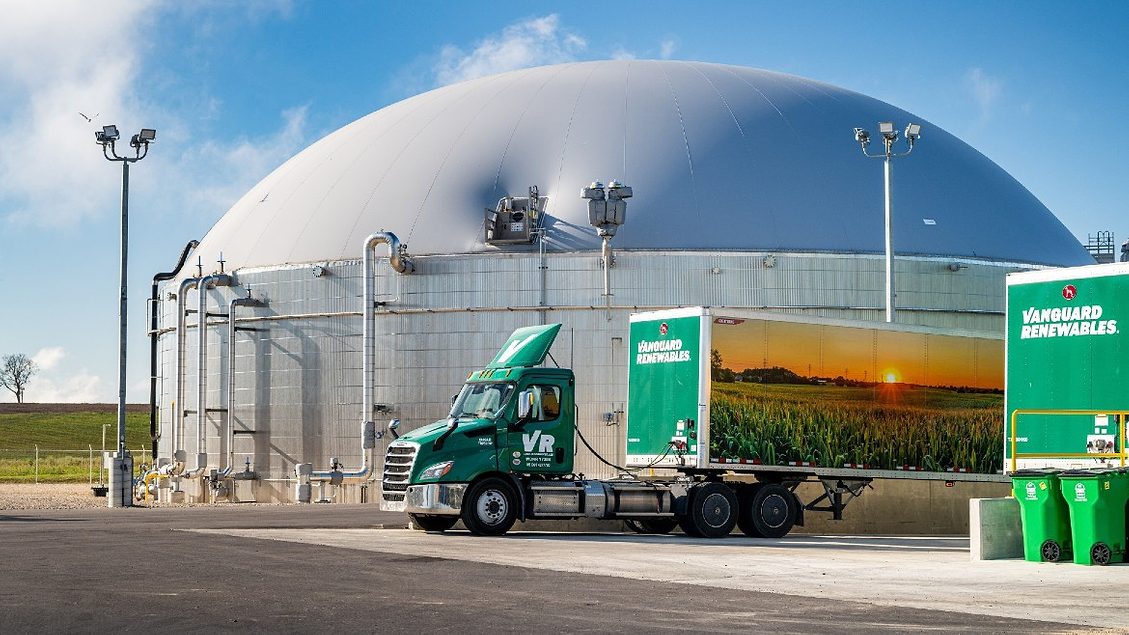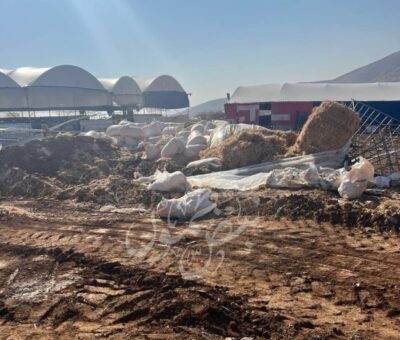European Flood Causes
Using a large ensemble of CMIP6 simulations, this study projects changes in joint probabilities of extreme storm surges and precipitation in European tide gauges. It finds increased joint probability in the northwest and decreased in most of the southwest by 2080, offering more robust insights compared to previous studies based on limited simulations.

Extreme storm surges, rainfall or river discharge can cause flooding. When these events happen at the same time, even more severe flooding may follow. Climate change could affect the odds that drivers of flooding coincide, potentially leading to larger flood risk. However, few scientists have tried to compute such changes, using only a few different computer models of our climate. Here, we use a much larger set of climate models to compute how the odds that an extreme storm surge coincides with extreme precipitation could change in the future. We find that at the coasts of northwestern Europe, those odds will increase, whereas in southwestern Europe, they will mostly decrease. On average, the changes will be as large as 36%–49% of the current odds, depending on whether the concentration of greenhouse gases in the atmosphere will increase by a medium or a large amount. When we use smaller sets of climate models for our calculations, we get substantially different results in some cases. In conclusion, by using a larger set of climate models than previous studies, we have made more robust computations of how the odds that extreme storm surges and precipitation coincide will change in Europe.
Abstract
When different flooding drivers co-occur, they can cause compound floods. Despite the potential impact of compound flooding, few studies have projected how the joint probability of flooding drivers may change. Furthermore, existing projections may not be very robust, as they are based on only 5 to 6 climate model simulations. Here, we use a large ensemble of simulations from the Coupled Model Intercomparison Project 6 (CMIP6) to project changes in the joint probability of extreme storm surges and precipitation at European tide gauges under a medium and high emissions scenario, enabled by data-proximate cloud computing and statistical storm surge modeling. We find that the joint probability will increase in the northwest and decrease in most of the southwest of Europe. Averaged over Europe, the absolute magnitude of these changes is 36%–49% by 2080, depending on the scenario. The large-scale changes in the joint probability of extreme storm surges and precipitation are similar to those in the joint probability of extreme wind speeds and precipitation, but locally, differences can exceed the changes themselves. Due to internal climate variability and inter-model differences, projections based on simulations of only 5 to 6 randomly chosen CMIP6 models have a probability of higher than 10% to differ qualitatively from projections based on all CMIP6 simulations in multiple regions, especially under the medium emissions scenario and earlier in the twenty-first century. Therefore, our results provide a more robust and less uncertain representation of changes in the potential for compound flooding in Europe than previous projections.
Key Points
-
We project changes in the joint probability of storm surge and precipitation extremes based on a large ensemble of model simulations from the Coupled Model Intercomparison Project 6
-
The joint probability will increase in the northwest and decrease in the southwest of Europe, with an average absolute magnitude of 36%–49%
-
Especially under lower emissions, often more than 5 or 6 climate model simulations are needed to draw robust conclusions on these changes
Plain Language Summary
Extreme storm surges, rainfall or river discharge can cause flooding. When these events happen at the same time, even more severe flooding may follow. Climate change could affect the odds that drivers of flooding coincide, potentially leading to larger flood risk. However, few scientists have tried to compute such changes, using only a few different computer models of our climate. Here, we use a much larger set of climate models to compute how the odds that an extreme storm surge coincides with extreme precipitation could change in the future. We find that at the coasts of northwestern Europe, those odds will increase, whereas in southwestern Europe, they will mostly decrease. On average, the changes will be as large as 36%–49% of the current odds, depending on whether the concentration of greenhouse gases in the atmosphere will increase by a medium or a large amount. When we use smaller sets of climate models for our calculations, we get substantially different results in some cases. In conclusion, by using a larger set of climate models than previous studies, we have made more robust computations of how the odds that extreme storm surges and precipitation coincide will change in Europe.
1 Introduction
The co-occurrence or close succession of different flooding drivers like storm surges, rainfall and river discharge has the potential to affect coastal communities more severely than the separate occurrence of these drivers (e.g., Bevacqua et al., 2017; Emanuel, 2017; Kumbier et al., 2018; Paprotny et al., 2018; Ruocco et al., 2011; van den Hurk et al., 2015). For instance, extreme precipitation or river discharge may increase the depth and/or area of flooding due to storm surges and high coastal water levels may hamper storm-water drainage and cause backwater effects. Such combinations of hazard drivers are called compound events (Zscheischler et al., 2018). Since the more traditional univariate analyses that neglect the compounding effects of flooding drivers may underestimate flood risk and the lifetime of adaptation measures to flooding (e.g., Leonard et al., 2014; Moftakhari et al., 2017; Wahl et al., 2015), compound events have received increased attention in the past decade. For instance, the historical dependence between and joint probability of various combinations of flooding drivers has been assessed at local (e.g., Couasnon et al., 2022; Kew et al., 2013; Santos et al., 2021; Zheng et al., 2014), national (e.g., Hendry et al., 2019; W. Wu et al., 2018), continental (e.g., Camus et al., 2021; Ganguli & Merz, 2019; Nasr et al., 2021; Paprotny et al., 2018, 2020; Wahl et al., 2015) and global scales (e.g., Bevacqua, Vousdoukas, Zappa, et al., 2020; Couasnon et al., 2019; Eilander et al., 2020; Lambert et al., 2020; Ridder et al., 2020; Ward et al., 2018), using observations and/or model hindcasts.
In comparison, fewer studies have projected how the potential for compound flooding may change in the future. For instance, a global study projected the joint probability of extreme storm surges and precipitation to decrease in parts of the subtropics and to increase at higher latitudes (Bevacqua, Vousdoukas, Zappa, et al., 2020). For the United States, the joint probabilities of various flooding drivers were projected to increase due to sea-level rise, changes in extreme river discharge and changes in tropical cyclones (Ghanbari et al., 2019; Gori et al., 2022; Moftakhari et al., 2017). For most of Europe, the joint probability of extreme storm surges and precipitation was projected to increase by Bevacqua et al. (2019), predominantly due to the increasing probability of extreme precipitation. However, Ganguli et al. (2020) projected a decrease in the dependence and joint probability of extreme storm surges and river discharge in northwestern Europe. The differences between the projections of these studies are inconsistent with the finding that the joint probability of extreme storm surges and precipitation is generally comparable to that of extreme storm surges and river discharge at small to medium river catchments (Bevacqua, Vousdoukas, Shepherd, & Vrac, 2020).
A common limitation of existing projections of the joint probability of flooding drivers is the small ensembles of global and/or regional climate model simulations on which they are based. For instance, Bevacqua, Vousdoukas, Zappa, et al. (2020) and Ganguli et al. (2020) based their projections on only 5 to 6 models from the Coupled Model Intercomparison Project 5 (CMIP5; Taylor et al., 2012), using only a single, high-emissions scenario simulation per model. Consequently, these projections may be sensitive to the specific models that were used and provide a limited view of the uncertainties related to future emissions, internal climate variability and structural differences between models, especially since the skill of climate models in capturing the atmospheric conditions that may cause compound flooding varies (Ridder et al., 2021; Y. Wu et al., 2021). Some studies used larger multi-model ensembles to project changes in the joint probability of extremes (e.g., Bevacqua et al., 2023; Ridder et al., 2022; Sun et al., 2023), but none included storm surges as a driver.
Furthermore, most projections of the joint probability of extremes in general are based on climate model ensembles that include only one initial-condition simulation per model. However, since co-occurring extremes are rare, estimates of their joint probability are sensitive to internal climate variability when derived from a single simulation, even when using a 50-year period from that simulation (Santos et al., 2021). Hence, as advocated by Bevacqua et al. (2023), projections of the potential for compound extremes would benefit from using single model initial-condition large ensembles (SMILEs). These are ensembles of simulations generated with the same external forcing but initialized at different times, so that internal climate variability has a different phase in each simulation and can be partially averaged out. Consequently, SMILEs can be used to develop more robust projections of the joint probability of extremes (Bevacqua et al., 2023) and to partition the total uncertainty of projections into uncertainties due to emissions scenarios, inter-model differences and internal climate variability (Lehner et al., 2020).
Many global climate models from the current, sixth Coupled Model Intercomparison Project (CMIP6) (Eyring et al., 2016) provide simulations for multiple initial-condition members. Including all these simulations for the analysis of compound flooding is challenging as storm surges and river discharge are not a direct output of global climate models but need to be derived from their simulations offline. This is typically done using computationally demanding hydrodynamic and hydrological models, respectively (e.g., Bevacqua, Vousdoukas, Zappa, et al., 2020; Ganguli et al., 2020). However, as a computationally more efficient alternative to hydrodynamic modeling, data-driven models have recently been developed to compute storm surges at large spatial scales (Bellinghausen et al., 2023; Bruneau et al., 2020; Tadesse & Wahl, 2021; Tadesse et al., 2020; Tiggeloven et al., 2021). Such statistical models, based on multi-linear regression (MLR) or other machine learning techniques, have been shown to perform similarly to or better than high-resolution hydrodynamic models such as the Global Tide and Surge Model (GTSM) of Muis et al. (2016, 2020, 2023) (Tadesse et al., 2020; Tiggeloven et al., 2021). Therefore, they may also be useful for projecting changes in the joint probability of extreme storm surges and other flooding drivers.
Here, we project changes in the joint probability of extreme storm surges and precipitation and analyze their uncertainty using the simulations of a large ensemble of CMIP6 models, including all initial-condition members available for each model. To derive storm surge information from each simulation, we use the data-driven statistical model of Tadesse et al. (2020), which we will show is well suited for the analysis of the joint probability of storm surge and precipitation extremes. We limit our study to Europe, where data-driven storm surge models generally perform well (Bruneau et al., 2020; Tadesse et al., 2020; Tiggeloven et al., 2021). Storm surges are mainly caused by wind and sea-level pressure. Therefore, the probability of joint extreme wind speed and precipitation events, which can disrupt transport and power systems (e.g., Jaroszweski et al., 2015), is closely related to that of joint storm surge and precipitation extremes and helps to interpret the changes in the latter physically. Therefore, we consider changes in the probability of joint wind speed and precipitation extremes alongside changes in the probability of joint storm surge and precipitation extremes and compare them. Finally, we exploit the large ensemble of CMIP6 simulations to compare the ensemble mean changes to the effect of internal climate variability, partition the uncertainty of our projections and compute the ensemble size required for qualitatively robust projections in different locations.
2 CMIP6 Data and Joint Extremes Analysis
In this section, we explain which CMIP6 simulations we use and how we analyze the changes in the joint probability of extremes in these simulations.
We analyze future changes in the joint probability of extremes for an intermediate and a high emissions scenario (shared socio-economic pathway scenarios SSP2-4.5 & SSP8.5, respectively; Meinshausen et al., 2020). As only few CMIP6 models provide simulations at a sub-daily frequency, we use daily mean CMIP6 simulations. Models are required to provide daily mean sea-level pressure (variable “psl”), surface wind speed (variable “sfcWind”) and precipitation flux (variable “pr”) output for the historical period (1850–2014) and at least one of the SSP2-4.5 and SSP5-8.5 scenarios (2015–2100). To obtain time series for 1850–2100, each SSP simulation is appended to its corresponding historical simulation. Daily mean wind speed and precipitation flux time series (converted to daily accumulated precipitation) are used to analyze (changes in) the joint probability of wind speed and precipitation extremes (as explained in Sections 3 and 4), whereas daily mean wind speed and sea-level pressure time series are used as input to the statistical storm surge model (as explained in Section 9). Like Ridder et al. (2022), we use daily mean instead of daily maximum wind speed, as more CMIP6 simulations are available for the former.
For several CMIP6 models, multiple realizations (denoted with “r” in the “ripf” variant label) are available that have been branched off from their preindustrial control run at different times. Because the phase of internal climate variability differs between these realizations, they can be used to average out part of the changes due to internal climate variability and better isolate the changes due to increasing greenhouse gas concentrations. In contrast to previous projections, we therefore include all available realizations of each CMIP6 model providing the output described above. The resulting data set includes over 20 terabytes of data from 27 different CMIP6 models (see Table 1 for an overview). To process this data efficiently and reproducibly, we use the Analysis-Ready Cloud Optimized CMIP6 data produced by the Pangeo/Earth System Grid Federation (ESGF) Cloud Data Working Group (https://pangeo-data.github.io/pangeo-cmip6-cloud/), held in public Google Cloud Storage. The data sets summarized in Table 1 reflect data sets that were available to download and ingest via the pangeo-forge feedstock (Busecke & Stern, 2023) at the time of writing of this manuscript. The data is analyzed using the code in the CMIP6cex repository (Hermans & Busecke, 2024a), for which the xarray (Hoyer & Hamman, 2017) and xMIP (Busecke et al., 2023) python packages are important building blocks.
Prior to the analysis, we bilinearly interpolated the simulations of each model to a common grid with a 1.5° × 1.5° resolution, using xESFM (Zhuang et al., 2023). A 1.5° × 1.5° grid roughly corresponds with the average resolution of the CMIP6 models (Table 1). The effects of orography and coastlines and mesoscale processes such as fronts and convection may be better resolved by models with a higher resolution, but these typically provide fewer simulations. Ensemble statistics are computed and displayed on the common 1.5° × 1.5° grid. The regridded simulations are also used as input to the statistical storm surge model (as described in Section 9).
In this study, we consider two types of compound extremes: (a) the combination of extreme daily mean wind speed and extreme daily accumulated precipitation, and (b) the combination of extreme daily maximum storm surge and extreme daily accumulated precipitation. While compound events can already be impactful if only one of their drivers is extreme (Wahl et al., 2015), we focus on the case in which both drivers are extreme, similar to previous studies (Bevacqua et al., 2019; Bevacqua, Vousdoukas, Zappa, et al., 2020; Ganguli et al., 2020; Ridder et al., 2022). We define extreme events using a peak-over-threshold (POT) analysis instead of using annual maxima, because this allows us to consider multiple extremes occurring in a single year and avoids including annual maxima that are not extreme.
Previous POT analyses have often used the same threshold percentile or used thresholds resulting in the same number of declustered extremes for each location and variable (e.g., Bevacqua, Vousdoukas, Zappa, et al., 2020; Camus et al., 2021; Ganguli et al., 2020; Hendry et al., 2019; Ridder et al., 2020); a pragmatic approach which we also adopt here. For Europe, Camus et al. (2021) found that using 3 vs 6 declustered extremes per year resulted in similar bivariate dependence patterns for several combinations of compound flooding drivers. Therefore, we use the 98th percentile of daily values as a threshold, which results in a number of extremes slightly higher than 6 per year. Hence, wind speed (w), storm surge (s) and precipitation (p) extremes are defined as P = p ≥ p98, W = w ≥ w98 and S = s ≥ s98, respectively, and joint extreme wind speed and precipitation and joint extreme storm surges and precipitation events as days on which those extremes co-occur (W ∧ P and S ∧ P, respectively). As a baseline, we only consider extremes that occur on the same day and do not decluster the extremes prior to the analysis. The sensitivity of our projections to these methods is discussed in Section 17.
We analyze the joint probability of extremes empirically by counting the number of joint extremes (NW∧P and NS∧P) and standardizing those numbers by the length of the time period considered, as done by Camus et al. (2021), Couasnon et al. (2019), Hendry et al. (2019), and Ridder et al. (2020, 2022).
2.1 CMIP6 Data Used
Model
SSP2-4.5 [#]
SSP5-8.5 [#]
Both [#]
°Lon × °Lat
Reference
1
ACCESS-CM2
5
6
4
1.875 × 1.25
Bi et al. (2020)
2
ACCESS-ESM1-5
38
35
33
1.875 × 1.25
Bi et al. (2020)
3
CanESM5
25
25
25
2.8 × 2.8
Swart et al. (2019)
4
CESM2
2
2
2
1.25 × 0.9
Danabasoglu et al. (2020)
5
CESM2-WACCM
3
3
3
1.25 × 0.9
Danabasoglu et al. (2020)
6
CMCC-ESM2
1
1
1
1.25 × 0.9
Lovato et al. (2022)
7
CMCC-CM2-SR5
1
1
1
1.25 × 0.9
Cherchi et al. (2019)
8
EC-Earth3
59
1
1
0.75 × 0.75
Döscher et al. (2022)
9
EC-Earth3-Veg
1
0
0
0.75 × 0.75
Döscher et al. (2022)
10
FGOALS-g3
1
0
0
2 × 2
L. Li et al. (2020)
11
GFDL-CM4
1
1
1
1 × 1
Held et al. (2019)
12
GFDL-ESM4
1
1
1
1 × 1
Dunne et al. (2020)
13
HadGEM3-GC31-LL
5
4
4
1.875 × 1.25
Andrews et al. (2020)
14
HadGEM3-GC31-MM
0
4
0
0.83 × 0.56
Andrews et al. (2020)
15
INM-CM4-8
1
1
1
2 × 1.5
Volodin and Gritsun (2018)
16
INM-CM5-8
1
1
1
2 × 1.5
Volodin et al. (2017)
17
IPSL-CM6A-LR
11
7
6
2.5 × 1.3
Boucher et al. (2020)
18
KACE-1-0-G
3
3
3
Not reported
Lee et al. (2020)
19
MIROC6
43
50
43
1.4 × 1.4
Tatebe et al. (2019)
20
MIROC6-ES2L
10
1
1
2.8 × 2.8
Hajima et al. (2020)
21
MPI-ESM1-2-LR
24
24
24
1.88 × 1.88
Mauritsen et al. (2019)
22
MPI-ESM1-2-HR
2
2
2
0.93 × 0.93
Mauritsen et al. (2019)
23
MRI-ESM2-0
1
1
1
0.75 × 0.75
Yukimoto et al. (2019)
24
NorESM2-LL
3
1
1
2.5 × 1.88
Seland et al. (2020)
25
NorESM2-MM
2
1
1
1.25 × 0.94
Seland et al. (2020)
26
TaiESM1
1
1
1
1.25 × 0.9
Wang et al. (2021)
27
UKESM1-0-LL
5
5
5
1.875 × 1.25
Sellar et al. (2020)
2.2 Definition of Joint Extremes
2.3 Future Changes in the Joint Probability of Extremes
2.3.1 Computing Future Changes
What is Your Reaction?
 Like
0
Like
0
 Dislike
0
Dislike
0
 Love
0
Love
0
 Funny
0
Funny
0
 Angry
0
Angry
0
 Sad
0
Sad
0
 Wow
0
Wow
0








































































